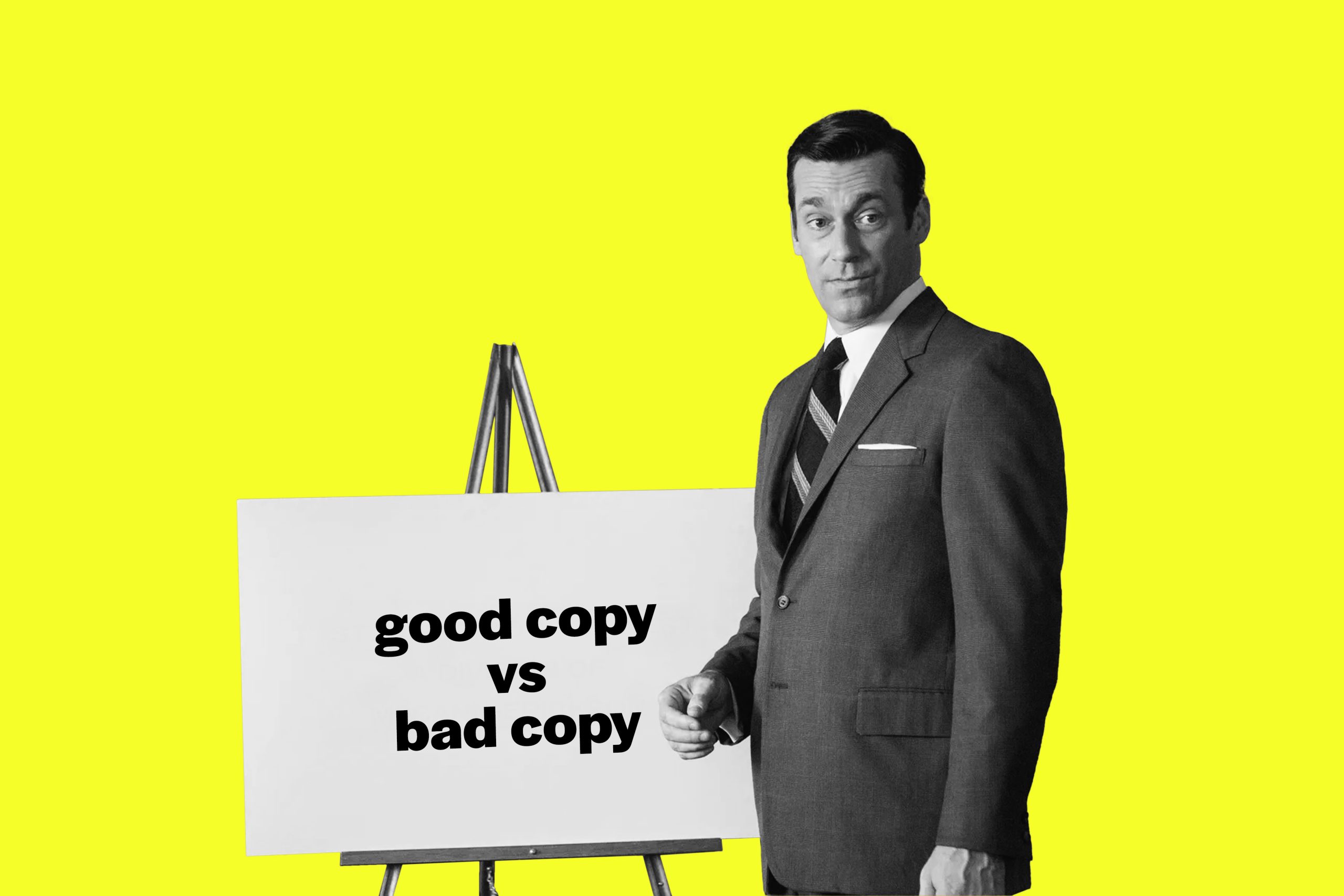Table of Contents
ToggleIn a world of AI, what makes copy good?
In This Post
What does it mean to write good copy when AI tools are in the mix? This post explores how humans still outshine generative models, why emotional storytelling matters, and what brands risk when their voice becomes too robotic.
As AI in marketing becomes more common—from AI copywriting tools to automated ad platforms—the line between “good enough” and genuinely good copy is getting blurry. At Arnold Street, a Toronto digital marketing agency, we’re constantly asking: how do we use AI for marketing without losing the human voice that actually converts?
I was walking down Ossington over the weekend (a popular Toronto street lined with trendy shops and bars) sipping an iced coffee and listening to Addison Rae’s (excellent) new album, when I was stopped in my tracks by copy so bad that I did a metaphorical spit take.
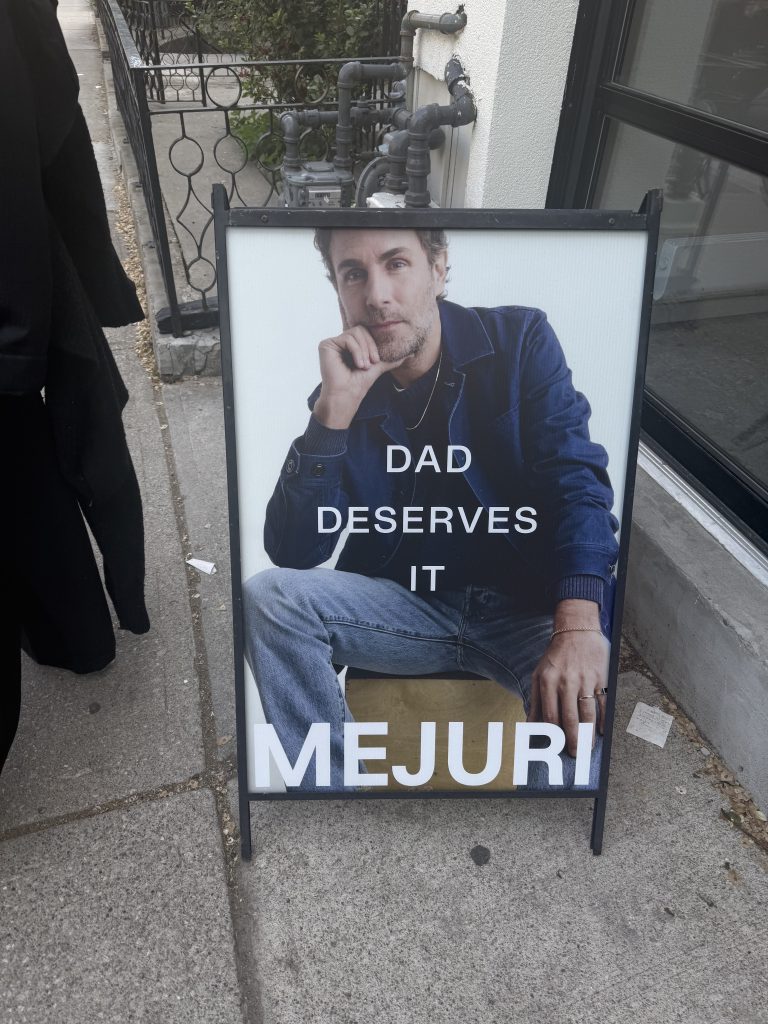
I have . . . so many thoughts here. First of all, the model in the ad doesn’t look like a Dad to me (at least, not any that I know). He looks like an artfully botoxed out of work actor shooting E-comm for a denim company, who is maybe 45 at most. Correct me if I’m wrong, but I doubt that his hypothetical, presumably young child has disposable income (or is the ad speaking to his imaginary wife? Is she supposed to reflect on her partner as “Dad” in the periphery of her mind while she’s walking down the street? I digress).
That being said, this ad does speak to an important marketing shift that’s been gathering traction throughout 2025. Brands that tend to target female customers (including Skims, Stanley and Pelaton) have been crafting campaigns to reach male audiences (look no further than Harris Dickinson’s recent shoot for rhode skincare).
While Mejuri’s Father’s Day campaign highlights this shift, of traditionally feminine brands branching out to target male demographics, it’s also a prime example of bad copy. Reading this ad, I felt talked down to, condescended. Dad deserves it, says who? Who is this “cool” Dad rocking a $200 delicate gold chain? The ad’s copy speaks to the fact that a campaign’s attention grabbing factor doesn’t necessarily equate to its value. I was stopped in my tracks because something felt . . . off, here.
Examples of bad copy
Another horrifyingly banal example of ineffective copy came up on my Instagram feed recently.
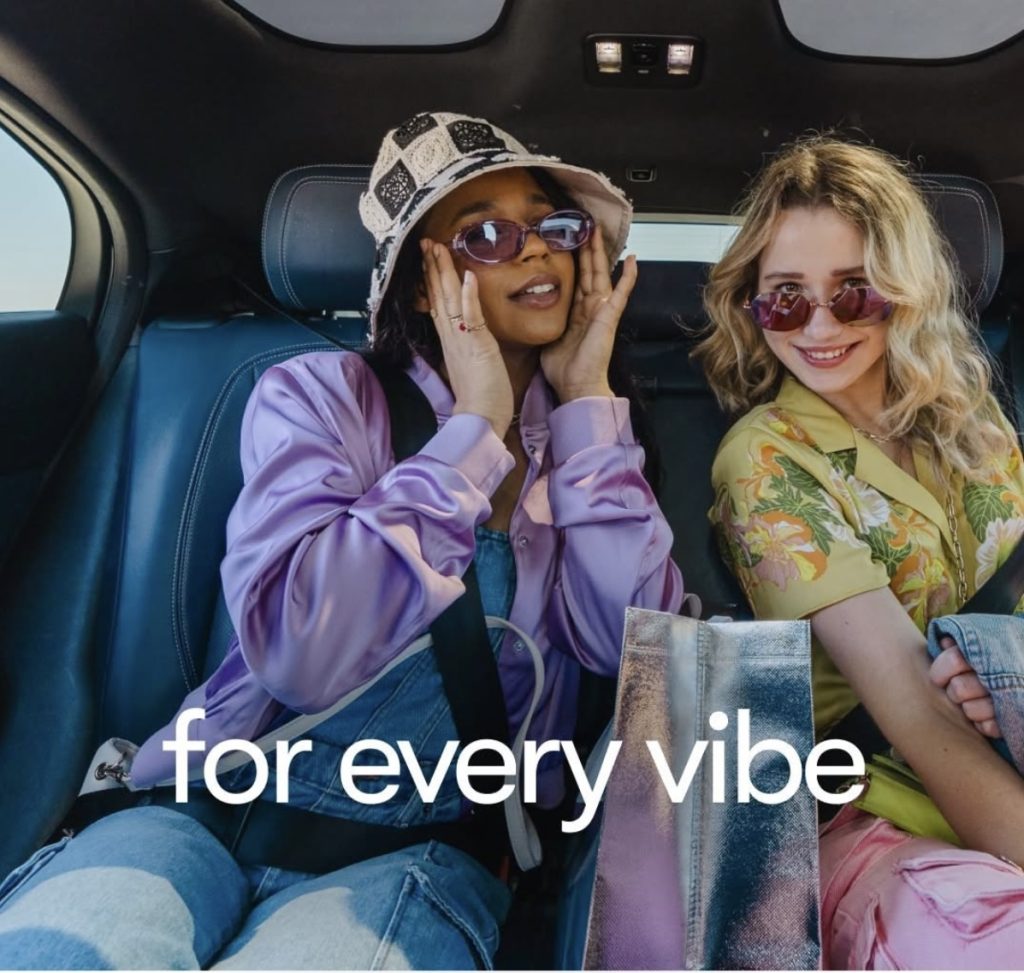
This ad for Waymo, an automated car company, is so bad that it’s almost difficult to articulate why it’s bad (don’t worry—I’ll try).
The copy is extremely vague and unclear, attached to no true desire or authentic story. What’s for every vibe? There’s no indication, based on the image or the copy, that this is about an automated, self-driving car—it reads as a B-list Beverly Hills sunglasses ad more than anything. It’s hollow in every sense of the word—both the image and the copy feel AI-generated. This ad makes me want to throw my phone in the trash and pull a Serena in season one of Gossip Girl, to be frank.
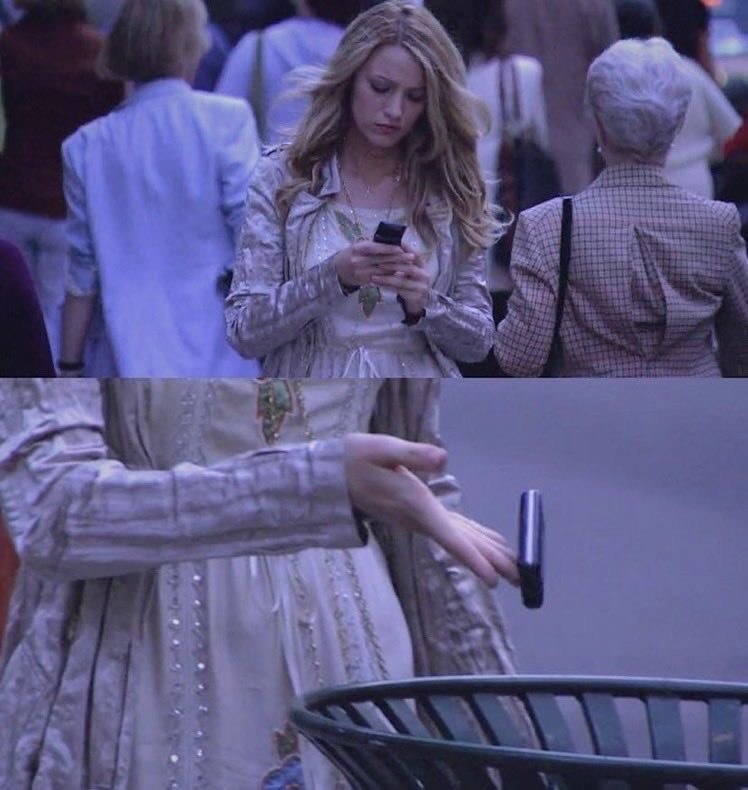
This type of generic ad can only work for established brands that are easily recognizable. For example, Jon Hamm is the new face of Skip the Dishes, and his increasingly bizarre ads for the popular takeout-delivery service app land, because of his visibility as an actor, and Skip the Dishes strong brand identity.
Furthermore, the “trendy” language used in the ad (ie, “vibes”) comes off as forced and inauthentic, because it feels misaligned. The way that Gen Z uses TikTok-y, descriptive language like “vibes” is intuitive and naturalistic, baked into threads of conversations between friends. In the ad, the use of the word smells like a corporate executive came up with the idea in a boardroom on a Monday.
How to write good copy in an AI-driven marketing world
So how could these examples of bad copy have been prevented? What could have been done differently, and how could the copy have been skewed to be effective and eye-catching, rather than rote, smelling like something that ChatGPT spit out?
In an interview with social-media consultant Rachel Karten, FONZIE, the team behind copy at A24, rhode and Netflix, spoke to the rules behind good copy:
“Don’t talk down, don’t punch down.”
To me, this heavyweight perspective highlights why Mejuri’s copy falls flat. On her Substack, Karten further explains what makes bad copy, bad, writing:
“When I see a bad campaign I often think to myself, Was no one asked to simply explain this out loud?”
It’s true that reading your writing back, or having to explain your ideas aloud, is a surefire way to ensure that your sentences read smoothly and your points make sense. It’s an age-old, human trick that leads to better copy and campaigns than plugging keywords and PDPs into ChatGPT, IMO.
Examples of powerful copy throughout history
Throughout the 21st century, there was a boom of iconic copy and slogans that have transcended being strong advertising and have become deeply ingrained into popular culture and the collective zeitgeist.
Can you match the iconic copy to the brand?
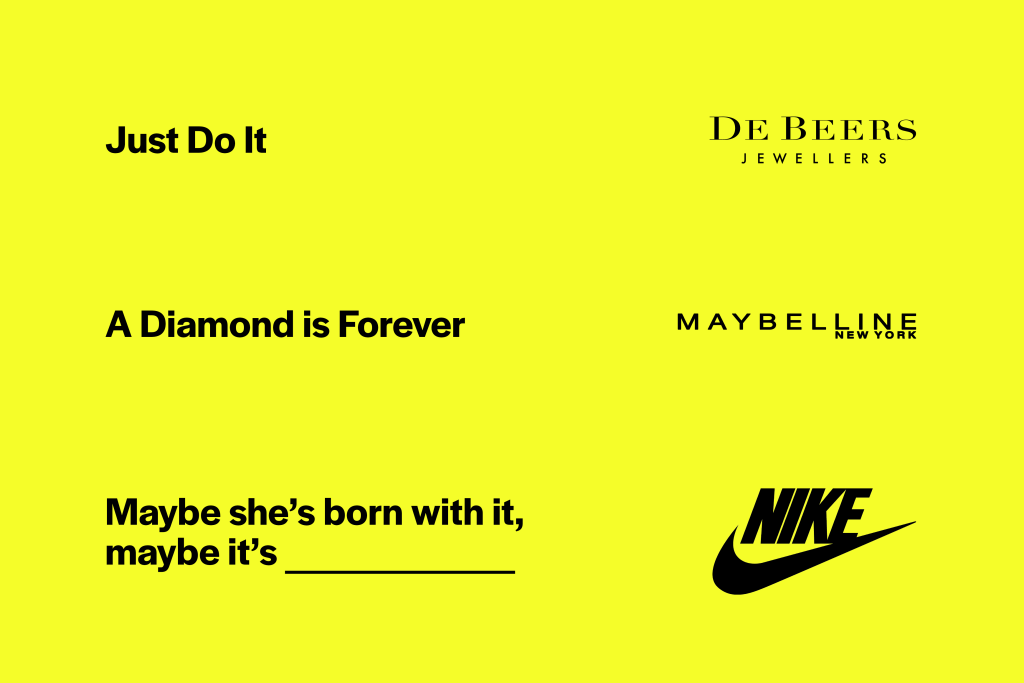
We bet that you got 100% of them right. That’s a testament to the power of effective copy and well-crafted campaigns. The examples listed here are so strong that they’ve surpassed their original intention (brand awareness) and have shaped the cultural zeitgeist.
Perhaps the most iconic example of this ad-slogan to pop-culture-zeitgeist-catchphrase pipeline is “I ❤️NY.” You probably don’t think of this evergreen logo, seen on baby tees and coffee mugs and keychains at the airport alike, as “good advertising.” This simple, highly effective copy (created by the advertising agency Wells, Rich and Greene in 1977 to increase tourism to the City of New York) has ascended beyond its original purpose. With I Love New York, anyone can be a New Yorker at heart. It’s everywhere—it’s the Chrysler Building, it’s Fifth Avenue. It’s Central Park and Friends and Sex and the City. Nearly 50 years after its inception, the phrase I ❤️NY is ubiquitous with the city itself.
What’s the difference between good and bad copy?
Differentiating between good copy and copy that makes you want to toss your phone in the trash can be as simple as considering: “what are you more likely to buy: a sales pitch or a friend rec?”
“Copy is emotions, stories, and truths,” Karten writes. This sentence reads as an authenticity checklist: held up against Waymo’s ad, these key points highlight that there is no emotion, story or truth in the hollow line “for every vibe.”
If emotions, stories and truths are at the heart of what makes for good and effective copy, then it’s interesting to consider whether or not AI-powered tools can generate good copy. Can you communicate the emotions, stories and truths of a campaign to ChatGPT, and have it generate effective ideas?
Where real people crave human copy on sites and socials, Google rewards it as well when it comes to ranking websites. Google’s SEO ranking system can sniff out AI copy, and it ranks websites with copy written by people higher than those with generic copy spit out from an AI program. This is important to keep in mind when it comes to your brand and business—being thoughtful and intentional about your site’s copy (while it will likely take more time and effort) is worth it when it comes to ranking for SEO (and boosting your site’s visitibilty).
Can AI create good copy?
The answer is both yes and no.
ChatGPT can be useful when it comes to brainstorming words and phrases associated with a product, brand or campaign. I find that it’s most effective when it’s used as a tool.
For example, if you were trying to come up with a tagline for a sunscreen, it could be beneficial to turn to ChatGPT and ask for “50 words associated with sunscreen + coconut scent + beach days + pool towel + tan lines.” From there, you could use those words to delve into the world and mood of the product, playing with different phrases and combinations to come up with juicy copy that captures something: a tactile memory, a familiar scent. The key here is remembering that people can smell bullshit, and that we all crave something real—that can look like something nostalgic (ie, that familiar banana-sunscreen smell), or something aspirational, yet within reach (the bliss and peace of a beach vacation, the feeling of falling asleep in the sand under blue sky).
It’s important to note that ChatGPT written captions are easy to spot from a mile away— Kara Lattanzio, Sr. Director of Digital Accounts here at Arnold Street, says that the telltale sign of a ChatGPT written caption is “the emojis.”
“If there’s a rocket emoji, I know it’s ChatGPT!” she said with a laugh.
Good copy is human— even when you use AI for marketing
This is what iconic advertising executive Don Draper got wrong about the power of advertising. In Mad Men’s first episode, Don tells a client who’s never been in love that:
“The reason you haven’t felt it is because it doesn’t exist. What you call love was invented by guys like me, to sell nylons.”
The truth is that there is no love in a pair of nylons. But if you can tap into what is true, the feelings of deep desire that we have all (hopefully) experienced, you can sell anything. Nylons, toothpaste. Sunscreen. Shoes. Cars. Jewellery (“Diamonds are forever . . . a girls best friend”).
Why Authentic Copy Still Wins
The bottom line is that the best copy is human at heart, speaking to our core desires. Acceptance, safety. To see and be seen. It’s pretty simple, actually—it doesn’t have to be that complicated. At the end of the day, all that we want is to be loved. That’s the whole point of anything, really. Whether you’re writing copy to sell a moisturizer that promises a nourished skin barrier (@rhode) or a heartfelt father’s day gift, our consumer motivations are wrapped up in this basic instinct.
Need human-first copy in a world of AI marketing? Arnold Street is a creative agency in Toronto offering digital marketing services that balance smart AI tools with real human storytelling. Whether you need brand campaigns, social content, or website copy, our digital marketing agency in Toronto helps you show up online like a real person—not a robot.
FAQs:
A: Technically, yes, but when it comes to ranking for SEO and having your content genuinely translate with your target audience, it’s important to write humanistic copy that’s clear, compelling and intentional. This is where AI can be used as a fantastic tool to facilitate brainstorming and creative direction—but it should never be used as a copy-and-paste method.
A: Yes! AI is a fantastic tool to use for social media management. AI powered tools can help with efficiency and organization when it comes to social media management. You can use AI to assist with content creation, scheduling and automation, SEO optimization and more.
A: AI art can’t be copyrighted, because it isn’t technically the work of a human creator. Because of this, under standard copyright law, AI art isn’t able to be copyrighted.
A: AI marketing is great for analysis, suggestions, automation; human marketers handle strategy, brand nuance, and emotional storytelling.
A: Use AI to brainstorm angles and headlines, rewrite in your brand voice, have a human editor sanity-check tone, story, and truth
